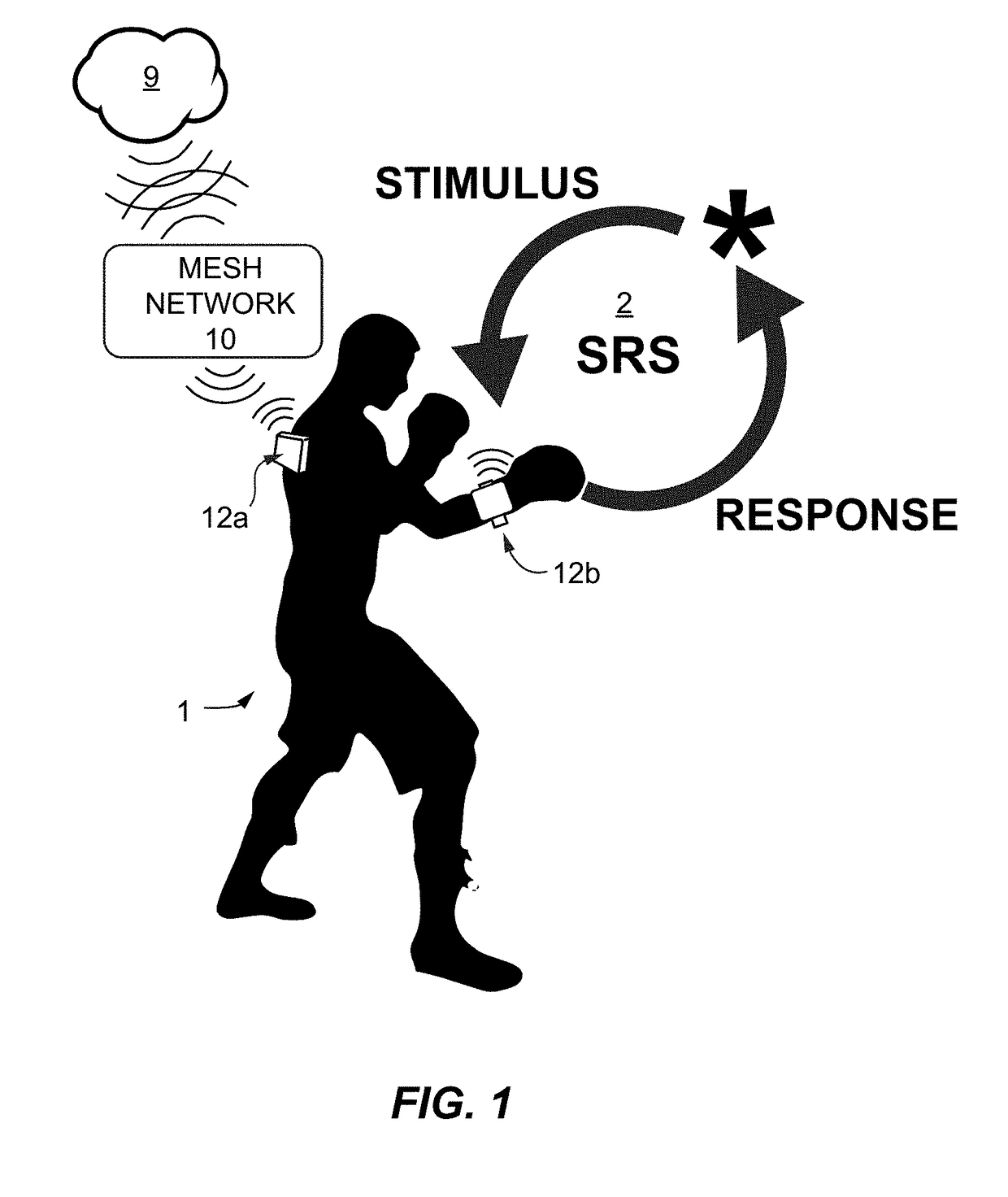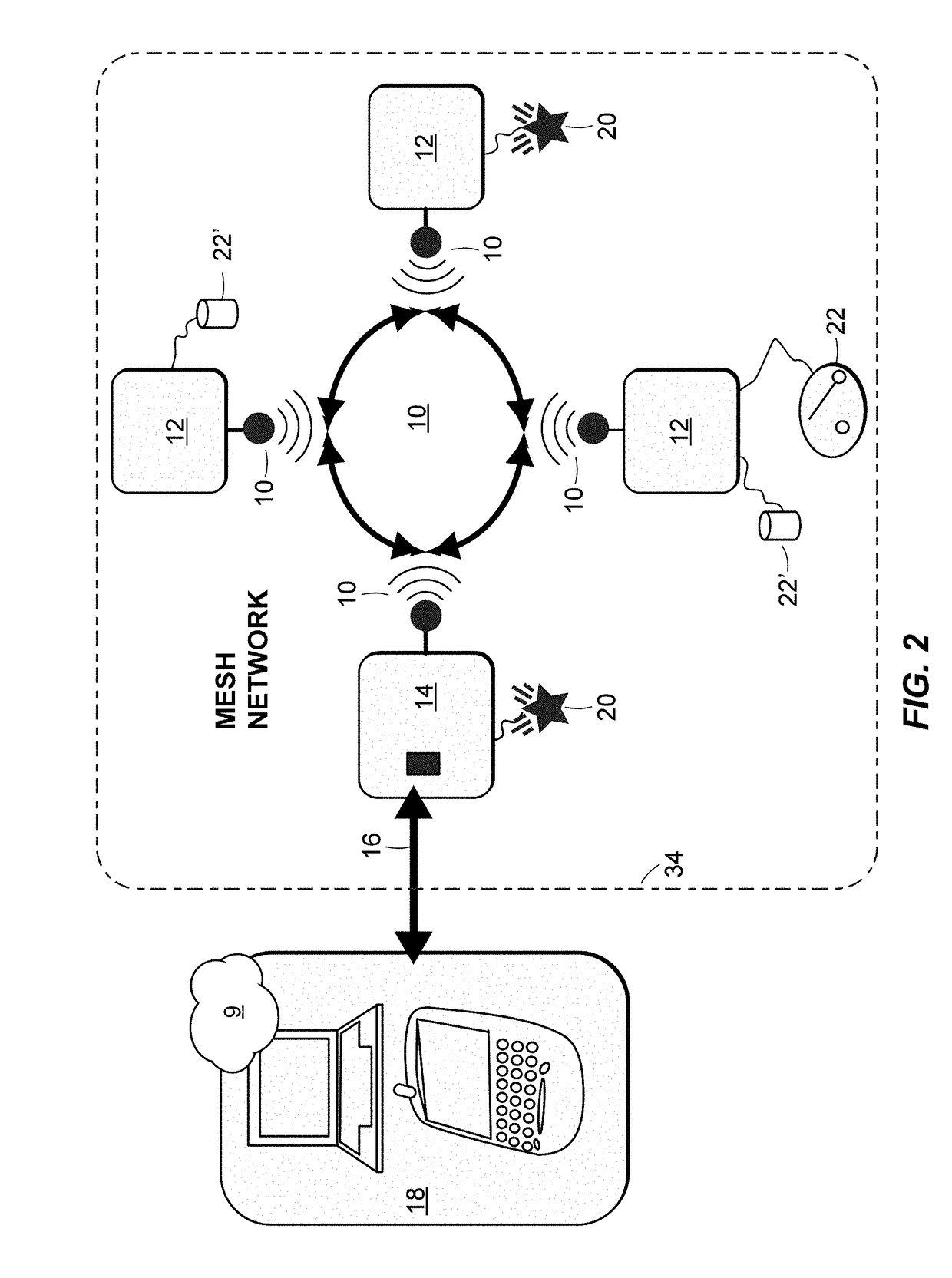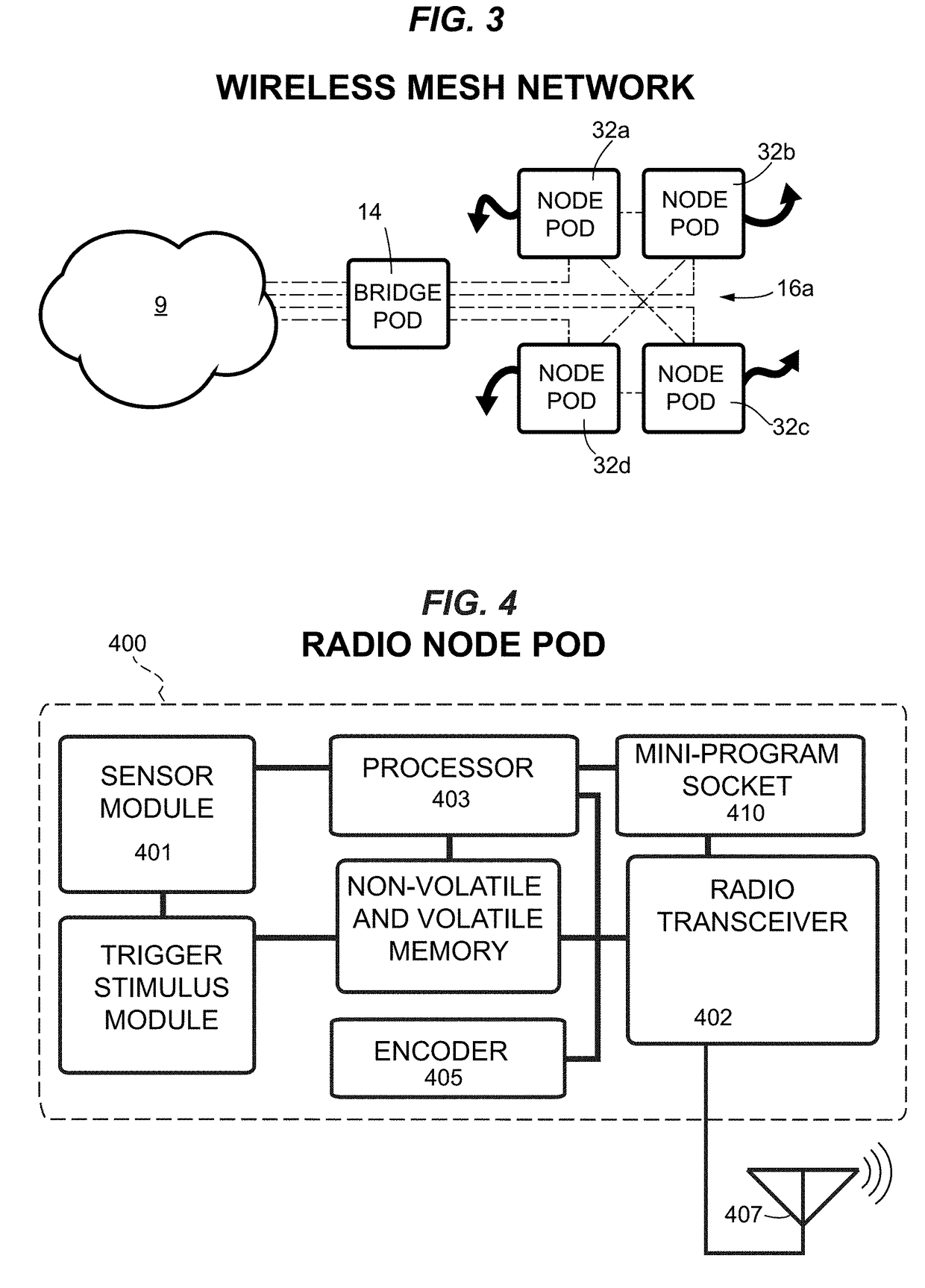Relative Response Systems and Measuring Methods
- Summary
- Abstract
- Description
- Claims
- Application Information
AI Technical Summary
Benefits of technology
Problems solved by technology
Method used
Image
Examples
example i
[0152]FIG. 20 is a spatial view of a mesh network with two contestants, and points out that the SRS routines may be extended to multiple subjects. In this example of a complete system and its use in multi-subject play, each user may be wearing multiple miniature radio node pods and will interact with the sensor packages of several other radio node pods. Each blow becomes a stimulus for a next blow, and each response becomes a stimulus for a next response.
[0153]Communications between a radio node pod and a bridge pod (generalized here as a “gateway pod 140”) extend to a cloud server 9. The gateway pod serves as a portal to a cloud host with remote server operated to display contest results on a leader board as may be used for competition, tourneys, and for team training. Team training may involve systems and methods for collecting reaction data of multiple individuals in response to one or more stimuli. Wireless networking and systems for sensing, quantitating, and processing reactio...
example ii
[0157]In a second example, a system is built around an accelerometer sensor package having a dynamic range in the tens or hundreds of G's. A trigger stimulus device, initially a colored LED, was mounted in a glove and was presented to a subject. As was observed, the subject punches at a target and the mitt-holder braces against the punch. The target device embedded in the glove has an array of sensors to more precisely quantitate precision of the hit and the impact intensity. This system has been demonstrated to sports clubs, dojos and home users and is found to function reliably in a mesh network configuration. Python was used to code the mini-scripts provided over a wireless network on the fly to the processors of the mesh network.
[0158]A calibration system was used to achieve accurate relative results without the need for complex transfer functions.
PUM
 Login to View More
Login to View More Abstract
Description
Claims
Application Information
 Login to View More
Login to View More - R&D
- Intellectual Property
- Life Sciences
- Materials
- Tech Scout
- Unparalleled Data Quality
- Higher Quality Content
- 60% Fewer Hallucinations
Browse by: Latest US Patents, China's latest patents, Technical Efficacy Thesaurus, Application Domain, Technology Topic, Popular Technical Reports.
© 2025 PatSnap. All rights reserved.Legal|Privacy policy|Modern Slavery Act Transparency Statement|Sitemap|About US| Contact US: help@patsnap.com



